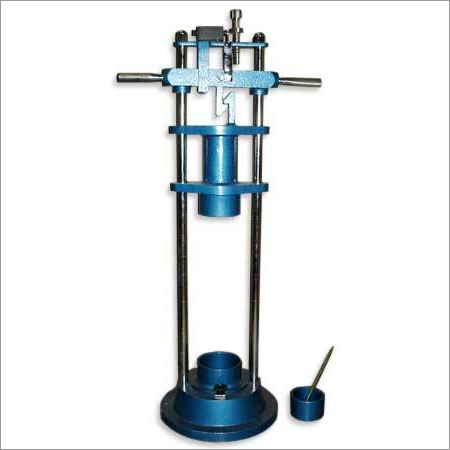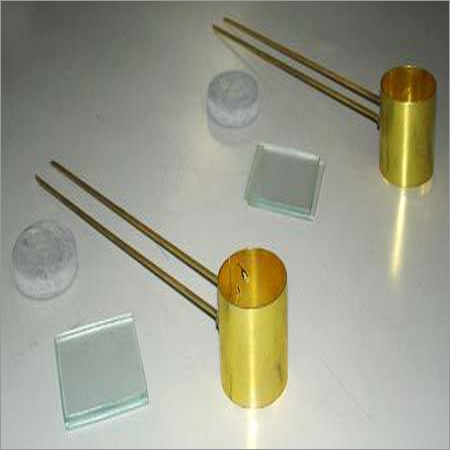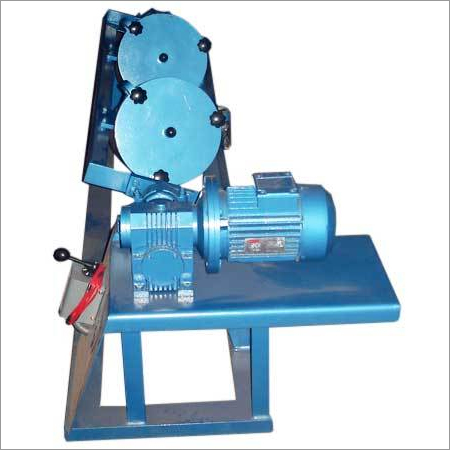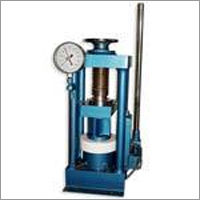Rotary Vacuum Evaporator
Rotary Vacuum Evaporator Specification
- Accuracy
- High
- Surface Treatment
- Polished
- Accessories Type
- Bump Trap, Receiving Flask, Condenser, Water/Oil Bath
- Technology
- Rotary Evaporation
- Control System
- Digital/Manual
- Machine Type
- Bench Top
- Power Source
- Electric
- Type
- Rotary Vacuum Evaporator
- Material
- Borosilicate Glass, Stainless Steel
- Function
- Solvent Evaporation & Distillation
- Application
- Laboratory, Chemical, Pharmaceutical, Research
Rotary Vacuum Evaporator Trade Information
- Minimum Order Quantity
- 1 Number
- Supply Ability
- 04 Per Month
- Delivery Time
- 3-8 Week
About Rotary Vacuum Evaporator
Vacuum Rotary Evaporator is basically used in chemical laboratories for removing solvents from samples by evaporation. It is recommended for use in evaporations which is often complicated by foaming, sensitivity of heat, and many more. The apparatus shakes the samples and consistently exposes a fresh surface through rotating the container that is kept in an evacuated condition. Clamped to V shaped heavy duty retort stand, the drive unit having speed control motor is highly efficacious.Major Components :
- A motor unit for rotating the evaporation flask
- A vapor duct
- A vacuum system to reduce the pressure
- A heated fluid bath to heat the sample
- A condenser
- A condensate collecting flask
- A motorized mechanism to lift the evaporation flask
We are one of the leading manufacturers of Vacuum Rotary Evaporators and guarantee our customers 100 percent satisfaction by providing excellent quality products.
Precision and Efficiency
Engineered for accurate solvent evaporation and distillation, the rotary vacuum evaporator maintains high control over temperature and rotation speed. Its advanced PTFE sealing system and digital interface enhance both performance and operational safety, streamlining laboratory workflows with dependable consistency.
Versatile Capacity and Applications
With glassware options ranging from 1L to 10L, the equipment accommodates varied processing volumes. Suitable for laboratories, pharmaceutical research, and chemical synthesis, it proves invaluable for tasks requiring gentle and efficient solvent removal under vacuum conditions.
Robust and User-Friendly Design
Constructed from polished borosilicate glass and stainless steel, this evaporator resists corrosion and chemical reactions. Features like a protective bath cover, bench-top compatibility, and both manual and digital controls make it comfortable and safe for daily laboratory operations.
FAQs of Rotary Vacuum Evaporator:
Q: How does the rotary vacuum evaporator facilitate solvent evaporation and distillation in research laboratories?
A: The rotary vacuum evaporator uses controlled rotation and reduced pressure to gently separate solvents from chemical mixtures. This method enables effective evaporation at lower temperatures, making it ideal for sensitive samples in laboratory, pharmaceutical, and chemical applications.Q: What are the available glassware capacities, and how do I choose the suitable size for my process?
A: The evaporator is available in 1L, 2L, 5L, and 10L glassware capacities. Selection depends on your sample volume and experimental scalesmaller amounts suit the 1L or 2L, while larger preparations benefit from the 5L or 10L options.Q: Where is the rotary vacuum evaporator typically used, and what are its key applications?
A: This device is widely employed in laboratory, chemical, pharmaceutical, and research environments for solvent evaporation, sample concentration, distillation, and purification processes required in synthesis and analysis protocols.Q: What benefits does the PTFE sealing system offer compared to traditional seals?
A: PTFE seals are highly resistant to chemical corrosion, heat, and wear, ensuring superior vacuum retention and long-term durability. This leads to more reliable results and lower maintenance needs over extended use.Q: When should I use the water or oil bath, and how does it contribute to the evaporators performance?
A: Use the water bath for temperatures up to 100C and the oil bath for higher ranges, up to 180C. Both provide uniform heating around the flask, reducing overheating risks and improving evaporation efficiency for a variety of solvents.Q: What process steps are involved in operating the rotary vacuum evaporator?
A: Typically, users add the sample solution to the flask, set the rotation speed and bath temperature, create a vacuum to lower boiling points, and collect the condensed solvent in the receiving flask. Accessories like bump traps prevent contamination during distillation.Q: How can users benefit from the digital display and control system in this rotary vacuum evaporator?
A: The digital display allows precise monitoring of temperature, rotation speed, and operating status, which enhances reproducibility and safety during experiments. Researchers can select manual or digital modes for greater flexibility and control.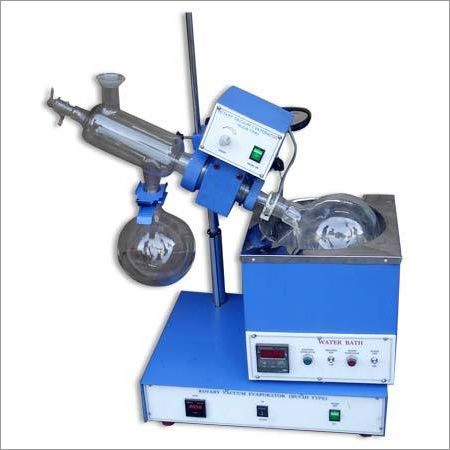
- Minimum Order Quantity
- 1 Number
- Supply Ability
- 04 Per Month
- Delivery Time
- 3-8 Week

Price:
- 50
- 100
- 200
- 250
- 500
- 1000+
More Products in Civil Engineering Instruments Category
Aggregate Impact Apparatus
Price Range 10000.00 - 600000.00 INR / Number
Minimum Order Quantity : 1 Number
Accuracy : 1%
Surface Treatment : Powder Coated
Accessories Type : Measuring cylinder, Tamping rod, Metal base with vertical guides
Application : Civil engineering laboratories, Construction material testing
Le Chatelier Mould
Price Range 10000.00 - 600000.00 INR / Number
Minimum Order Quantity : 1 Number
Accuracy : High
Surface Treatment : Polished Finish
Accessories Type : Glass Plate, Weight
Application : Cement Testing
Deval Abrasion Testing Machine
Price Range 10000.00 - 600000.00 INR / Number
Minimum Order Quantity : 1 Number
Accuracy : 1%
Surface Treatment : Powder coated / painted
Accessories Type : Two hollow cylinders, tray, revolution counter, abrasive charge
Application : Aggregate and civil engineering testing
Cement Testing Equipments
Price Range 10000.00 - 600000.00 INR / Number
Minimum Order Quantity : 1 Number
Accuracy : 1%
Surface Treatment : Powder Coated / Painted
Accessories Type : Attachments for Vicat apparatus, Le Chatelier, Briquette molds, Cube molds
Application : Construction material quality assessment, laboratory testing
Factory Address :
Plot No 47, Emerald Indl Estate, Kidc Indl Area, Deku Village, Khalapur Taluk,
Khopoli Raigad, Maharahtra


